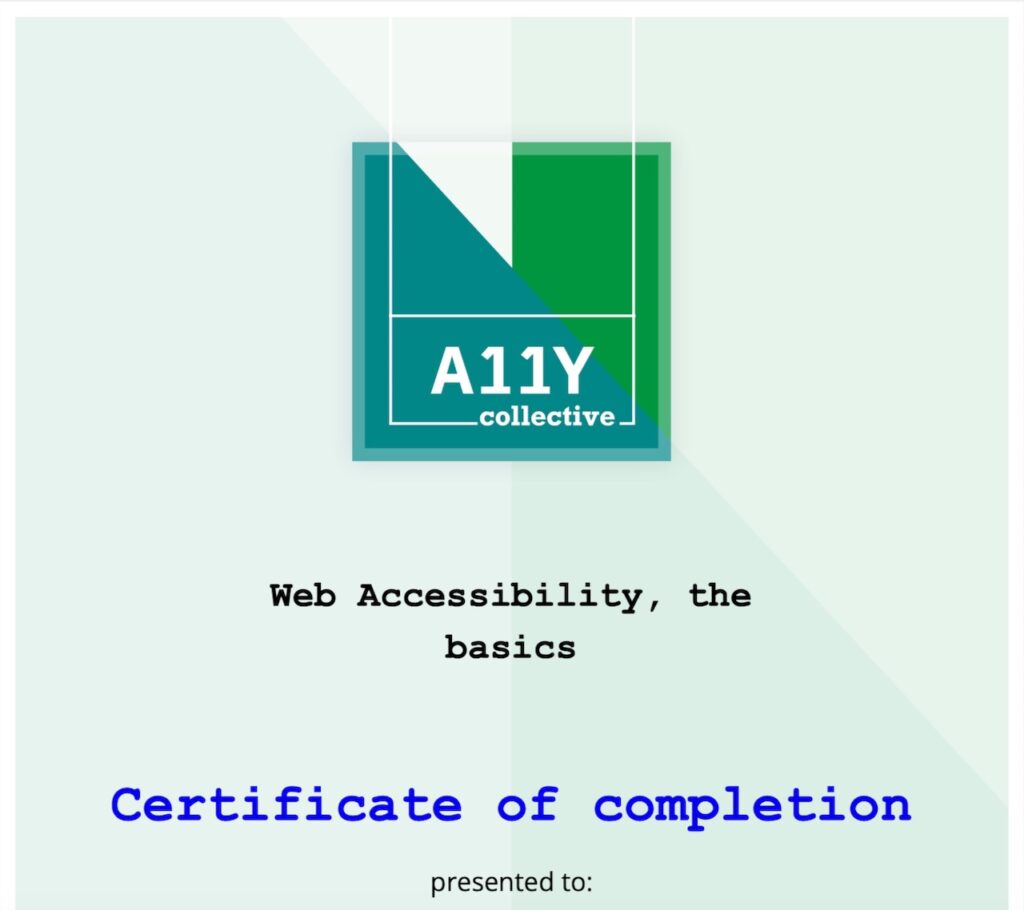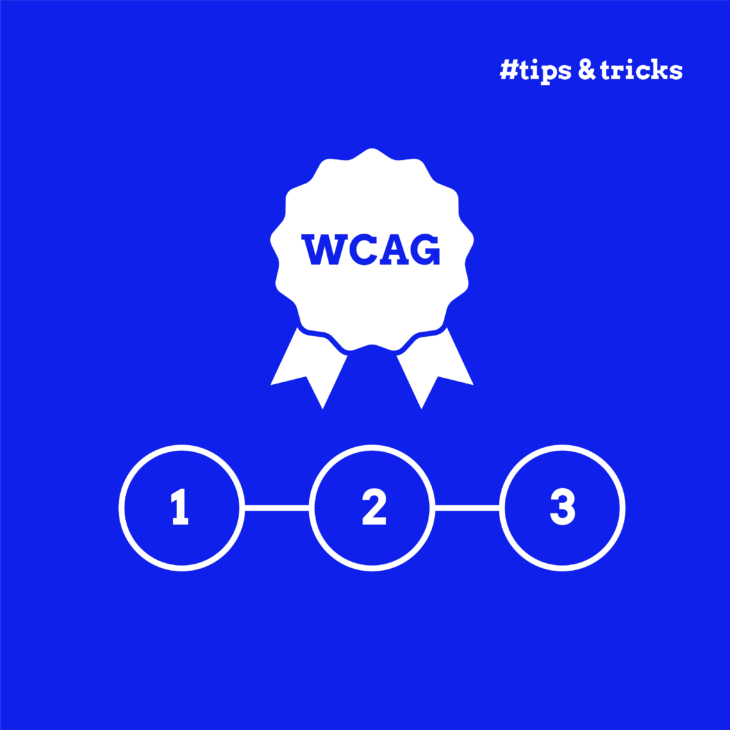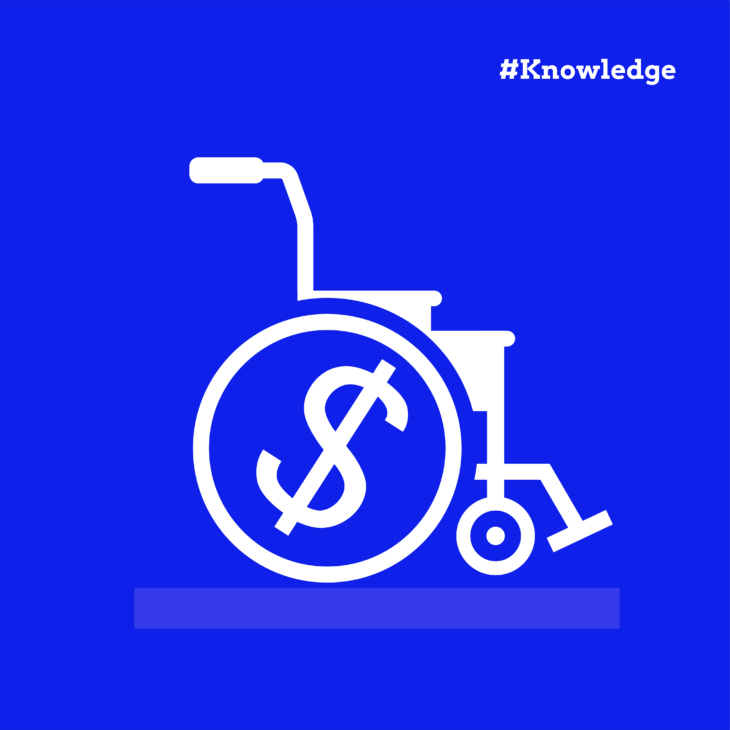Taeke Reijenga has extensive experience with the business side of Web Accessibility. As CEO of the full service digital agency Level Level, he has managed in a short amount of time to get his entire team on board when it comes to including web accessibility in their workflow.
With accessibility lawsuits becoming more common, many organisations are now searching for reliable ways to demonstrate their commitment to making websites accessible to everyone.
Thankfully, we know exactly how to help you! In this short article, we’ll walk you through practical steps to show WCAG compliance, even though there’s no single “official” WCAG certification (and you’ll see why there shouldn’t be one at all!).
You’ll learn about:
- Building expertise within your team through specialised accessibility courses.
- Obtaining valuable third-party audit documentation that validates your efforts.
- Documenting your compliance efforts.
- Maintaining accessibility over time.
- Creating a roadmap for ongoing improvements.
Let’s begin!
The truth about WCAG certification
Many organisations search for “WCAG certification”, hoping to find a straightforward path to compliance. However, it’s vital to understand that no single official certification body exists for WCAG standards. People just assume there is one because you can get a certificate for almost anything – including a licensed unicorn hunter and a professional cuddler.
However, this creates confusion about what genuine compliance looks like.
For example, many people believe that:
- Automated testing alone can prove compliance.
- Achieving compliance is a one-time task rather than an ongoing process.
- Only large organisations or government websites need to be compliant.
- Installing an accessibility overlay tool provides complete protection.
Spoiler alert: all of these are wrong.
In reality, websites should demonstrate WCAG compliance through multiple recognised methods:
- Professional training that builds internal accessibility expertise among your team.
- Comprehensive third-party accessibility audits with detailed conformance documentation.
- An official accessibility statement that shows your commitment to following WCAG Success Criteria standards.
Legal frameworks also support this approach. Courts and the Department of Justice typically recognise WCAG 2.1 AA as the technical standard for measuring website accessibility under the Americans with Disabilities Act (ADA).
So, if you want to achieve a good level of compliance (and maintain it in the future), you should implement a more holistic approach:
- Initial accessibility evaluation followed by quick remediation actions.
- Regular monitoring, testing, and improvement cycles that are embedded in your business model.
- Clear documentation of all compliance efforts – to monitor progress and be more transparent about the whole process.
- Ongoing staff training in accessibility principles and practices.
How to demonstrate WCAG compliance
1. Professional training: building in-house expertise with accessibility courses
Creating a foundation of knowledge within your team is the best first step toward WCAG compliance. While the International Association of Accessibility Professionals (IAAP) offers well-respected certifications like the Web Accessibility Specialist (WAS), these are designed for professionals already working in accessibility – not beginners just starting their journey.
For teams new to accessibility, professional WCAG training from recognised providers offers the perfect starting point. These courses equip your team with practical skills to create accessible websites from the ground up, no matter their area of expertise.
The A11Y Collective offers several role-specific courses to fit different needs and skill levels:
- Web accessibility, the basics (€50): A comprehensive introduction that covers fundamental concepts, giving your team a shared understanding of accessibility principles.
- “An insightful course to learn the basics. This helps to set a foundation for an accessible business model.” – Moazzam Ali Afzal (Jan 2025)
- Role-specific courses for targeted learning:
- Accessible design (€95): Practical guidelines for designers, covering colour contrast, typography, and navigation patterns that work for all users.
- Advanced specialisations for deeper expertise:
- Advanced Accessible Components (€95): A technical course for developers who need to build complex yet accessible web components.
All courses feature a self-paced learning environment, allowing team members to fit training around their existing workload. For organisations looking to train multiple staff members, The A11Y Collective offers course bundles and tailored business packages.
Upon completion, participants receive an official dated certificate that serves as proof of training. These certificates also earn Continuing Accessibility Education Credits (CAECs), which can be valuable for professionals maintaining other accessibility certifications.

2. Meeting accessibility standards through professional audits
Purchasing professional accessibility audits is the most effective way to achieve de facto WCAG certification. These audits provide tangible documentation of your website’s accessibility status – something many organisations need for legal protection and to demonstrate genuine commitment.
Professional audits conducted by IAAP-certified experts deliver a formal assessment of your compliance status. A thorough audit includes:
- Automated testing using specialised tools to identify obvious accessibility barriers across your site.
- Manual testing with actual assistive technologies like screen readers to find issues that automated tools miss.
- Technical verification of conformance against specific WCAG compliance levels (A, AA, or AAA).
- Detailed documentation of findings and clear recommendations for fixing each issue.
The cost of professional audits typically ranges from €1,500 for small websites to €15,000+ for complex sites with many pages and features. Our accessibility audit, however, has a flat rate of €5,000 (we don’t care how big your website is), and while this might seem significant, the return on investment can be substantial:
- Expanded audience reach – approximately 15–20% of your potential visitors have disabilities.
- Protection from expensive lawsuits (which often range from $5,000 to $20,000, not counting legal fees).
- Improved site usability for all visitors, not just those with disabilities.
- Enhanced brand reputation as an inclusive organisation.
Lost in the ocean of accessibility requirements?
Leave it to the experts and schedule a professional accessibility audit for your website.
3. Remediation and continuous monitoring
Once your audit reveals accessibility issues, the next logical step, of course, is fixing them. You’ll need to create a remediation process or use the one included in the audit service. It has to be well-documented because it will serve as evidence of your compliance efforts and has to include the following:
- Prioritised issue resolution – addressing critical barriers first (like keyboard navigation problems or missing alternative text) before tackling less severe issues.
- Regular automated testing with tools like Axe or WAVE to catch new issues as they arise.
- Compliance verification through follow-up testing or a formal re-audit by accessibility professionals.
- Detailed documentation showing all fixes implemented, with dates and specific changes made.
Creating a detailed accessibility statement is also essential. This public-facing document demonstrates transparency about your organisation’s accessibility efforts and provides necessary information for users who need assistance.
Your accessibility statement should appear in your website footer and include the following:
- Clear declarations about which WCAG conformance level you’ve achieved or are targeting (typically WCAG 2.1 or 2.2 at level AA).
- Information about current accessibility initiatives and recent improvements.
- Honest acknowledgement of any known accessibility issues still being addressed.
- Direct contact information for users who need accessibility support (email and phone).
- A simple process for users to report new accessibility problems they encounter.
- Your commitment to continuous improvement in accessibility.
This statement acts as both a helpful resource for users and tangible evidence of your accessibility efforts – especially valuable if your site’s accessibility is ever questioned.
Begin your WCAG compliance journey today with The A11Y Collective
Taking practical steps toward WCAG compliance doesn’t have to be complicated. At The A11Y Collective, we offer a clear pathway to help you create more accessible websites through both training and professional services.
Our structured learning approach gives your team practical, hands-on skills they can apply immediately. From basic accessibility principles to advanced component development, each course teaches specific techniques for creating websites that work for everyone. When your team members understand accessibility from the start, they can build it into their daily work – preventing costly fixes later.
Our courses have earned 5-star reviews and are trusted by agencies and companies who value accessibility as part of their core business practices.
Adele Asuncion – Experience Director, Nordea Bank“The combination of a virtual workshop and modules that designers could learn at their own pace about accessibility and how it affects their workflow received a lot of positive feedback from the community. The modules are thorough and well made, I would highly suggest them if you’re a part of preparing your organisation for changing their ways of working to accommodate inclusive design practices.”
Still, while training builds internal knowledge, professional audits provide the clearest evidence of WCAG compliance. Our expert auditors can thoroughly evaluate your site and provide detailed documentation of your accessibility status.






